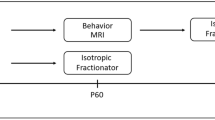Neurobehavioral activities were estimated in three groups of male albino mice using the open field, elevated plus maze, light/dark board, and hole-board tests. The control group included intact animals, while alloxan-induced diabetes was evoked in the other two groups (single i.p. injection of 120 mg/kg alloxan). In the third group, a nonspecific beta-adrenoreceptor antagonist, propranolol, was i.p. injected (40 mg/kg) before the induction of diabetes. In diabetic mice, all neurobehavioral indices tested in the four above-mentioned tests were significantly (P< 0.05) smaller than those in the control group. The frequencies of rearings and grooming episodes in the open field, number of entries into the open arms and time spent in these arms in the elevated plus maze test, and number of head dips in the hole-board test demonstrated the most intense drops (more than twofold). Pretreatment with propranolol provided significant (P < 0.05) normalization of all neurobehavioral indices in diabetic mice; such normalization with respect to the locomotion intensity, frequency of grooming, time spent in the open arms, and both indices in the light/dark board was nearly complete. Thus, diabetes in the animal model used is accompanied by the development of the state of abnormally high anxiety. The activity of the betaadrenergic system is noticeably involved in the formation of this state; pharmacological blocking of beta-adrenoreceptors provides significant anxiolytic effects.
Similar content being viewed by others
Change history
26 March 2018
The author’s name G. F. Ibironnke shoul be read as G. F. Ibironke
References
A. D. Mooradian, “Pathophysiology of central nervous system complications in diabetes mellitus,” Clin. Neurosci., 4, No. 6, 322-326 (1997).
A. M. Jacobson, G. Musen, C. M. Ryan, et al., “Long term effects of diabetes and its treatment on cognitive function,” New Engl. J. Med., 356, 1842-1852 (2007).
A. Ott, R. P. Stalk, A. Hofman, et al., “Association of diabetes mellitus and dementia: the Rotterdam study,” Diabetologica, 39, 1392-1399 (1966).
C. T. Kodhl, D. T. Franc, J. P. Rao, et al., “Diffusion tensor imaging identifies deficits in white matter microstructure in subjects with type 1 diabetes that correlates with reduced neurocognitive function,” Diabetes, 57, 3083-3089 (2008).
B. M. Lobnig, O. Kromeke, C. Optenhostert-Porst, and O. T Wolf, “Hippocampal volume and cognitive performance in long-standing type 1 diabetic patients without microvascular complications,” Diabetic Med., 33, 32-39 (2006).
G. Musen, C. M. Ryan, D. C. Jimerson, et al., “Effect of type 1 diabetes on gray matter density as measured by Voxel-based morphometry,” Diabetes, 55, 326-333 (2006).
L. M. Amy, L. C. Jonathan, and J. E. Bay, “Reconsolidation of appetitive memory for both natural and drug reinforcement is dependent on β adrenergic receptors,” Learning Memory, 15, 88-92 (2008).
A. Jangre, A. K. Datusalia, and S. S. Sharma, “Reversal of neurobehavioral and neurochemical alterations in STZ-induced diabetic rats by FeTMPyP, a peroxynitrite decomposition catalyst and 1,5-isoquinolinediol a poly(ADP-ribose) polymerase inhibitor,” Neurol. Res., 36, No. 7, 619-626 (2014).
M. Bjorkland, I. Scheinin, T. Heikinen, et al., “Spatial memory improvement by an alpha-2 adrenoceptor agonist dexmedetomidine is not mediated through alpha 2c adrenoceptor,” Prog. Neuropsychopharmacol. Biol. Psychiat., 25, 1539-1554 (2001).
S. Pellow, P. Chopin, S. E. File, and M. Brilley, “Validation of open/closed arm entries in an elevated plus maze as a measure of anxiety in the rat,” J. Neurosci., 14, 149-167 (1985).
S. Pellow and S. File, “Anxiolytic and anxiogenic drug effects on exploratory activity in an elevated plus maze: A novel test of anxiety in the rat,” Pharmacol. Biochem. Behav., 24, 526-530 (1986).
C. Torres and M. D. Escarabajal, “Validation of a behavioral recording automated system in the elevated plus maze test,” Life Sci., 70, 1751-1762 (2002).
A. B. Grisby, R. J. Anderson, K. E. Freeland, et al., “Diabetes and anxiety,” J. Psychosom. Res., 53, No. 6, 103-162 (2002).
Author information
Authors and Affiliations
Corresponding author
Additional information
A correction to this article is available online at https://doi.org/10.1007/s11062-018-9700-z.
Rights and permissions
About this article
Cite this article
Ibironnke, G.F., Asifat, O.S. Effects of Beta-Adrenergic Blockade on Diabetes-Induced Neurobehavioral Alterations in Mice. Neurophysiology 49, 283–287 (2017). https://doi.org/10.1007/s11062-017-9683-1
Received:
Published:
Issue Date:
DOI: https://doi.org/10.1007/s11062-017-9683-1




